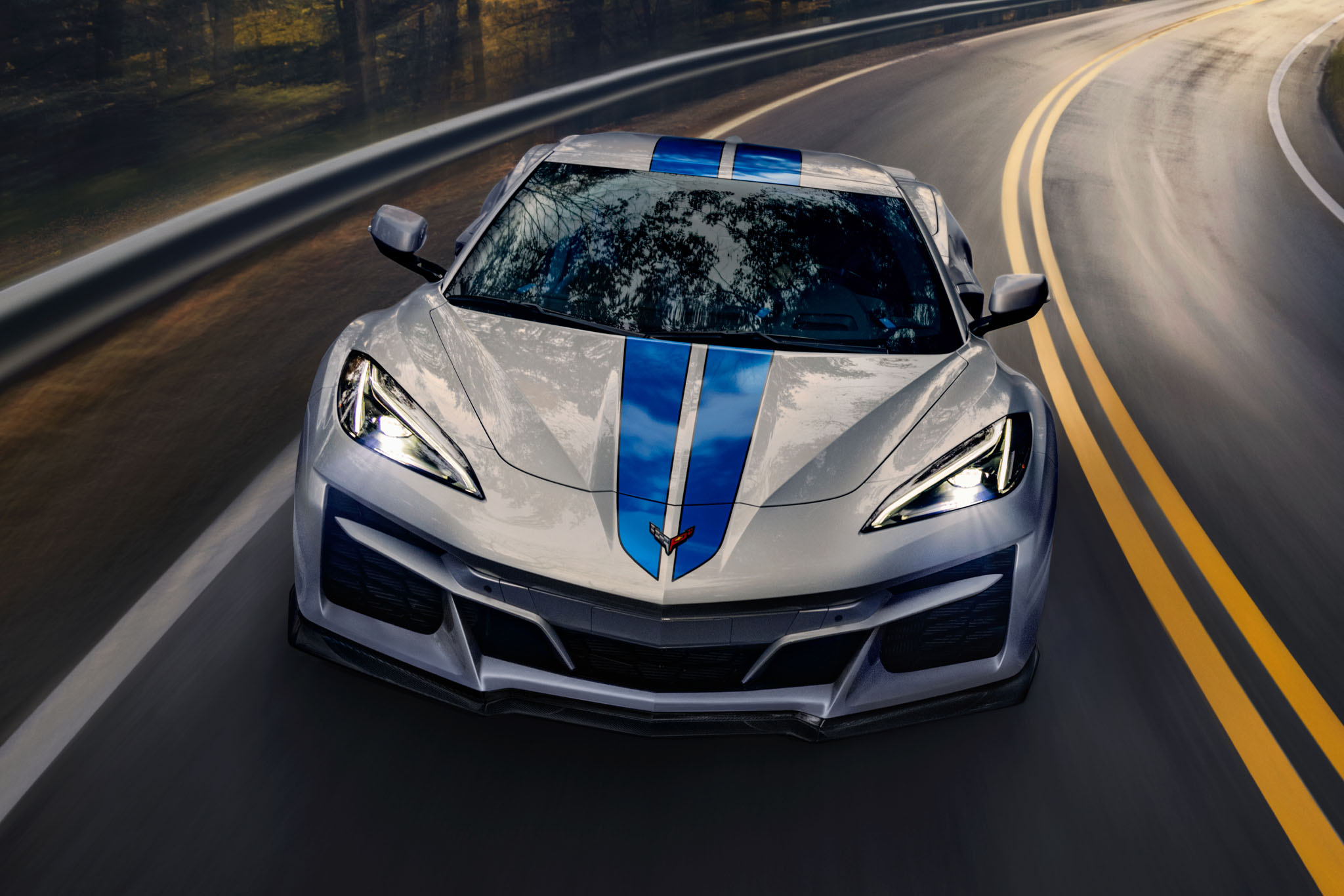

The Chevy Corvette has always been America’s sports car for its athleticism on the road and proven record on the track. The newest iteration might not have the same welcome, however. The new 2024 Chevy Corvette E-Ray is officially banned from competing at events sanctioned by the National Council of Corvette Clubs and will be required to park at least 30 feet away from other cars and buildings if driven to an event, according to the association’s rules. The news was spotted by CorvetteForum.com.
That’s because, unlike any Corvette before it, the E-Ray has a 1.9-kWh lithium-ion battery pack that organizers (and likely insurers) may have deemed too risky to have on the track and near anything else. We reached out to the NCCC and to Chevy for comment but haven’t yet heard back. We’ll update this story if we do.
The rule appears to have been added in November 2022, after the car was largely confirmed but before its debut. The rule, 1.8.1 Item 14 is clear: “Electric Vehicles/Hybrids using lithium type battery packs are prohibited in Competitive events. If driven to NCCC events, they should be parked 30 feet minimum from structures or other vehicles.” The NCCC oversees hundreds of autocross (low- and high-speed events) and time trials nationwide.

Although the NCCC hasn’t yet responded, the restriction is likely due to the threat that lithium-ion battery packs can pose when they overheat and ignite. Most track managers haven’t yet created a new way to treat battery fires, opting instead to let the batteries largely burn themselves out and mitigate any risks around it. On-track fires involving internal combustion vehicles can stop races for hours, depending on severity. Off-track fires can stop races, too; crews responding to fires in the paddock or parking lots are crews that can’t respond to fires on track. Lithium-ion battery fires—even small ones—can take hours to burn out, and the packs can remain hot for long times after. New extinguishers can rapidly cool and contain lithium-ion fires, but those aren’t yet widely used, and they’re hugely expensive compared to typical extinguishers. That’s likely why the NCCC prohibits E-Ray parking near structures.
That’s probably not comforting to the Corvette fans eager to pay more than $100,000 for the new E-Ray— the quickest Corvette ever—and take it to the track. For now, the Corvette E-Ray will have to stay in the parking lot, very alone.
Got a tip? Send it in to tips@thedrive.com